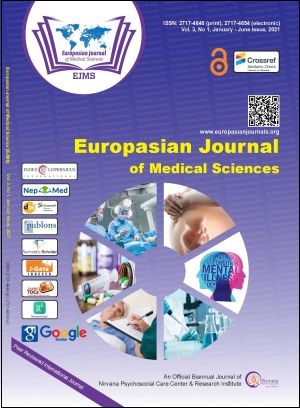Diaphyseal Femur Fracture in Paediatric Age group: Outcome with fixation by Elastic Nailing System
Keywords:
Diaphyseal femur fracture, Elastic nail, Fracture union, Titanium elastic nailing systemAbstract
Background: Diaphyseal femur fracture in paediatric age group account for 1.6% of all paediatric fractures. Fracture fixation by elastic nail provides three point fixation. This study aims to assess the outcome of diaphyseal femur fracture in paediatric age group from 5 to 15 years treated with titanium elastic nailing system.
Methods: Thirty six patients with diaphyseal femur fracture were treated with titanium elastic nailing system from November 2018 to August 2020 was analyzed prospectively. All the patients were followed up for six months for the study. Final outcome was evaluated at six months.
Results: The mean time of fracture union was 9.12 weeks. Two patients had limb lengthening of 6 mm and 8 mm respectively. One patient had 1 cm of shortening and 8 degree of varus angulation and 9 patients had bursitis over nail insertion site. According to Flynn grading 26 cases have excellent results (72.22%) and 10 cases have satisfactory results (27.78%).
Conclusion: Diaphyseal femur fracture can be treated with elastic nailing system with early mobilization and good functional outcomes.
Downloads
Downloads
Published
How to Cite
Issue
Section
License
Copyright (c) 2021 Sagar Panthi, Rishiswor Shrestha, Jigyasu Pradhan, Bikash Neupane, Ishory Bhusal, Angelica Karki

This work is licensed under a Creative Commons Attribution 4.0 International License.
The author(s) retain the ownership of the copyrights for their work published in EJMS without any restrictions. Upon submission, the author(s) grants EJMS a license to publish, including to display, store, copy, and reuse the published content.
License to Publish
By submitting a manuscript to EJMS, the author(s) grant the journal a non-exclusive license to:
- Publish and distribute the content in all formats, media, and platforms (both existing and future), while identifying EJMS as the original publisher.
- Reproduce, display, and store the content in both print and online formats, including institutional and digital repositories.
- Translate, adapt, and summarize the work, including reprints, extracts, and abstracts.
- Develop derivative works based on the original content.
- Include the work in electronic databases and provide links to third-party materials.
Creative Commons Licensing
In addition to EJMS’s publishing rights, authors grant third parties the right to use, share, and distribute their work under the Creative Commons Attribution 4.0 (CC BY 4.0) International License. This allows unrestricted use of the content, provided proper attribution is given to the original author(s) and the journal.

